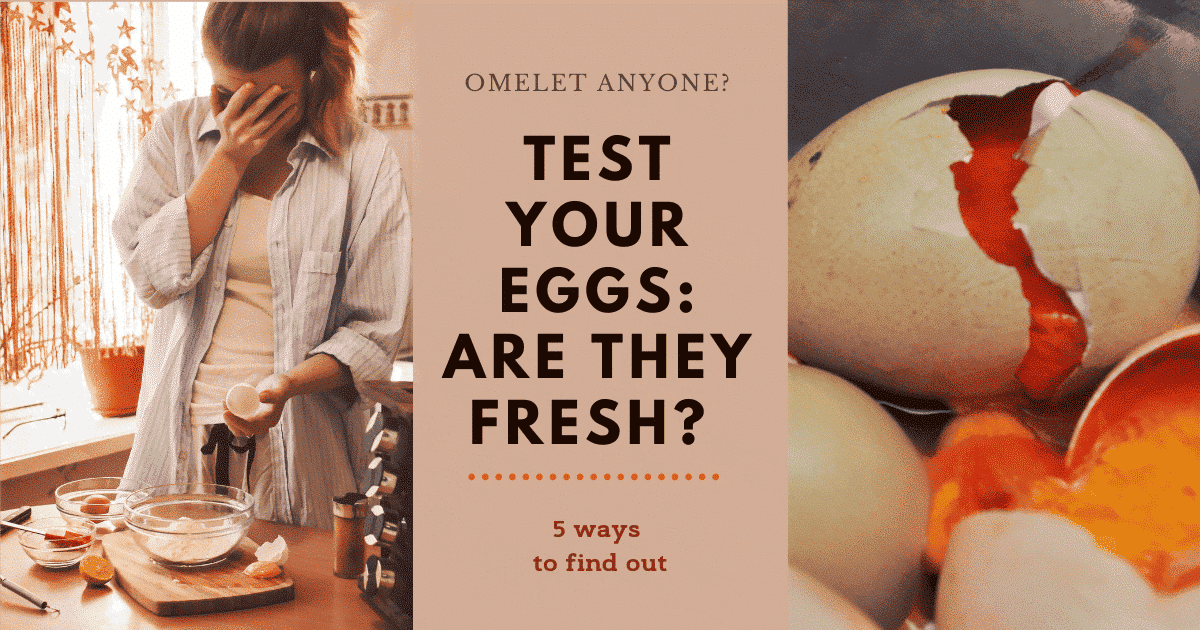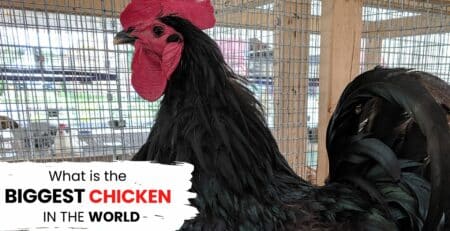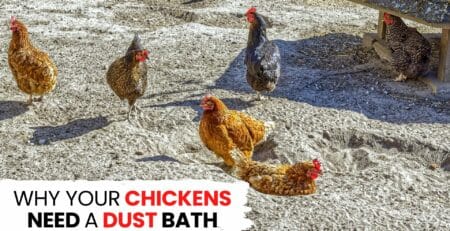A good day starts with a good breakfast – and what can be better than some fresh yummy eggs! You reach for eggs but can’t remember how long they have been sitting there. Are they still good to eat? When in doubt, there are several methods you can use to determine if your eggs are good or bad. One of the most popular is the float test.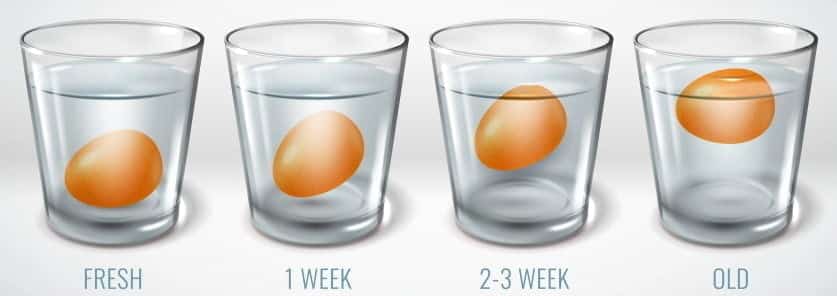
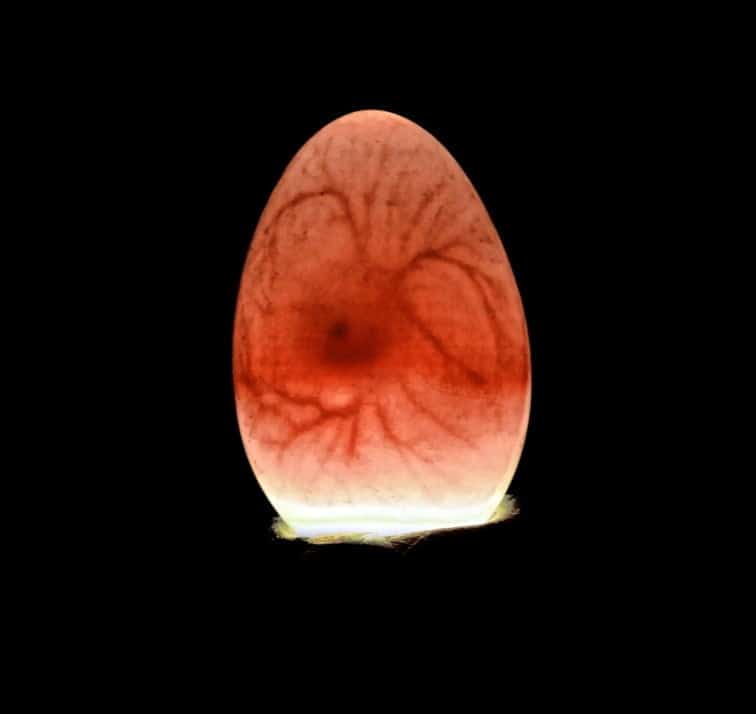 First, hold the light source up to the large end of the egg, tilt the egg, and turn it quickly from left to right. You should see only a sliver of air (thinner than 1/8 inch, or 3.175 mm) at the top and a light yolk in the middle. If there’s a slightly larger pocket of air and a darker yolk, the egg’s still okay, but you should use it soon. If there’s a gaping area of air and some coagulated yolk, you better toss it. Candling can be helpful, but it cannot tell you if an egg has gone bad like the float test. Trust your senses before using eggs for meals.
First, hold the light source up to the large end of the egg, tilt the egg, and turn it quickly from left to right. You should see only a sliver of air (thinner than 1/8 inch, or 3.175 mm) at the top and a light yolk in the middle. If there’s a slightly larger pocket of air and a darker yolk, the egg’s still okay, but you should use it soon. If there’s a gaping area of air and some coagulated yolk, you better toss it. Candling can be helpful, but it cannot tell you if an egg has gone bad like the float test. Trust your senses before using eggs for meals.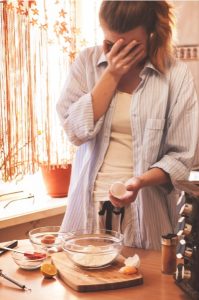 But we don’t always think about checking the freshness of our eggs before we crack them. That’s why it’s also good to know how to tell if an egg is bad when it’s outside the shell. When you crack a very fresh egg, it will have a thick white color that doesn’t spread much. Yellow will stand up and have a nice, rounded dome. If the egg white is quite thin and spreads, it is probably past its tip. Slightly yellowish yellow or very easily broken can also be a sign that the egg is old. Hite from a very fresh egg will be cloudy. A clear egg white indicates an older egg, but not necessarily a rotten egg.If in doubt, try a sniffing test. It is the oldest, simplest, and most reliable method of telling whether an egg has gone wrong. The smell of a rotten egg is unmistakable and should be apparent immediately after cracking. If it stinks, don’t eat. Instead, toss the egg and wash the bowl or plate with hot, soapy water before using it again.
But we don’t always think about checking the freshness of our eggs before we crack them. That’s why it’s also good to know how to tell if an egg is bad when it’s outside the shell. When you crack a very fresh egg, it will have a thick white color that doesn’t spread much. Yellow will stand up and have a nice, rounded dome. If the egg white is quite thin and spreads, it is probably past its tip. Slightly yellowish yellow or very easily broken can also be a sign that the egg is old. Hite from a very fresh egg will be cloudy. A clear egg white indicates an older egg, but not necessarily a rotten egg.If in doubt, try a sniffing test. It is the oldest, simplest, and most reliable method of telling whether an egg has gone wrong. The smell of a rotten egg is unmistakable and should be apparent immediately after cracking. If it stinks, don’t eat. Instead, toss the egg and wash the bowl or plate with hot, soapy water before using it again.
More light – more eggs!
Summer is chickens’ favorite time of the year. Long warm days give them plenty of opportunities to wander in search of delicious worms to slurp, insects to peck, sweet flowers to savor, and anything and everything else that catches their eyes. On the other hand, daylight is a crucial component to encouraging chickens to lay eggs. Chickens lay eggs during the day, most frequently in the morning. They need at least 12 hours of light per day, whereas 14 to 16 hours of light exposure will keep them performing at their full potential. The breed of chicken you have can significantly impact the number of eggs you should expect to receive each day. For example, Leghorn chickens can produce 4-6 white eggs per week, while Sultan chickens produce only one egg per week.Here are some tips on how can you help your chickens lay more eggs: If you have many chickens in your flock, you can somedays pick up more eggs than you and your family can eat. You can safely store unwashed freshly-laid eggs from backyard chickens or a local farm at room temperature for several days or even a couple of weeks. Storing them in the refrigerator can increase their shelf life (up to 2 months). But what if you are not sure which are the fresh ones? Maybe you heard about the float test.Try float test to identify the freshness of the egg.
Eggs are a few foods where age, and shelf life are challenging to identify, as their content and appearance do not change, even after the expiration date. However, a straightforward test helps us to check if the eggs are fresh. All we need is a glass container and water. This test is called the float test for eggs.Here’s how it works …Process:Pour water into half of the glass bowl and place raw eggs in the shell in it.Egg freshness indicators:
1. The freshest egg
The egg is freshest if, as soon as you place it in a bowl of water, it sinks to the bottom and remains motionless there.2. A week-old egg
The seven-day-old egg sinks to the bottom of the bowl but not to the entire surface. One part remains elevated.3. A three-week-old egg
After three weeks, the egg, which is still within the shelf life, seeks its balance in a bowl of water and quickly rises from the bottom of the container.4. Old egg
If the egg is immersed in water and floats to the surface, it means that it is old and potentially expired. Therefore, you should do a sniffing test before eating it.Why does the float test work?
A thin membrane is in each egg, and there is a small air cell between the membrane and the shell. This air pocket grows larger than an egg, so a very fresh egg will have smaller air cells than an older egg. When you place an entire egg in water, the air cell affects its buoyancy. The bigger the air pocket, the more floating ability the egg has. The more it will float, showing you the egg’s age. This information is basic egg science that you can use to your advantage in the kitchen.While this method may tell you whether an egg is fresh or old, it doesn’t mean whether it is good or bad. For example, an egg can sink and still be bad, while an egg that floats may still be fine to eat. Fortunately, other methods can help you decide whether you should eat this egg or throw it away.Shine a light on your egg
Candling is used to identify which eggs are fertilized and how each embryo is developing. You can also use this information to tell whether eggs are fresh or old. All you need is a dark room and a small, bright source of light. In the past, people used candles, hence the name “candling,” but you can use a small flashlight or reading light instead. With a little bit of practice, you will tell what’s going on inside the shell. First, hold the light source up to the large end of the egg, tilt the egg, and turn it quickly from left to right. You should see only a sliver of air (thinner than 1/8 inch, or 3.175 mm) at the top and a light yolk in the middle. If there’s a slightly larger pocket of air and a darker yolk, the egg’s still okay, but you should use it soon. If there’s a gaping area of air and some coagulated yolk, you better toss it. Candling can be helpful, but it cannot tell you if an egg has gone bad like the float test. Trust your senses before using eggs for meals.
First, hold the light source up to the large end of the egg, tilt the egg, and turn it quickly from left to right. You should see only a sliver of air (thinner than 1/8 inch, or 3.175 mm) at the top and a light yolk in the middle. If there’s a slightly larger pocket of air and a darker yolk, the egg’s still okay, but you should use it soon. If there’s a gaping area of air and some coagulated yolk, you better toss it. Candling can be helpful, but it cannot tell you if an egg has gone bad like the float test. Trust your senses before using eggs for meals.Trust your nose, ears, and eyes.
Our eyes, ears, and nose are valuable tools for telling whether an egg is good or bad. Use them to inspect the egg before making it into a meal. A cracked shell is the most apparent sign that maybe an egg has gone bad. If the hard shell and the protective membrane just beneath appear to have broken, the egg is more vulnerable to invading bacteria. If you don’t see cracks, shake the egg a couple of times and listen. If you hear a movement, do not use the egg at all. The sound usually indicates a runny yolk. But we don’t always think about checking the freshness of our eggs before we crack them. That’s why it’s also good to know how to tell if an egg is bad when it’s outside the shell. When you crack a very fresh egg, it will have a thick white color that doesn’t spread much. Yellow will stand up and have a nice, rounded dome. If the egg white is quite thin and spreads, it is probably past its tip. Slightly yellowish yellow or very easily broken can also be a sign that the egg is old. Hite from a very fresh egg will be cloudy. A clear egg white indicates an older egg, but not necessarily a rotten egg.If in doubt, try a sniffing test. It is the oldest, simplest, and most reliable method of telling whether an egg has gone wrong. The smell of a rotten egg is unmistakable and should be apparent immediately after cracking. If it stinks, don’t eat. Instead, toss the egg and wash the bowl or plate with hot, soapy water before using it again.
But we don’t always think about checking the freshness of our eggs before we crack them. That’s why it’s also good to know how to tell if an egg is bad when it’s outside the shell. When you crack a very fresh egg, it will have a thick white color that doesn’t spread much. Yellow will stand up and have a nice, rounded dome. If the egg white is quite thin and spreads, it is probably past its tip. Slightly yellowish yellow or very easily broken can also be a sign that the egg is old. Hite from a very fresh egg will be cloudy. A clear egg white indicates an older egg, but not necessarily a rotten egg.If in doubt, try a sniffing test. It is the oldest, simplest, and most reliable method of telling whether an egg has gone wrong. The smell of a rotten egg is unmistakable and should be apparent immediately after cracking. If it stinks, don’t eat. Instead, toss the egg and wash the bowl or plate with hot, soapy water before using it again.
